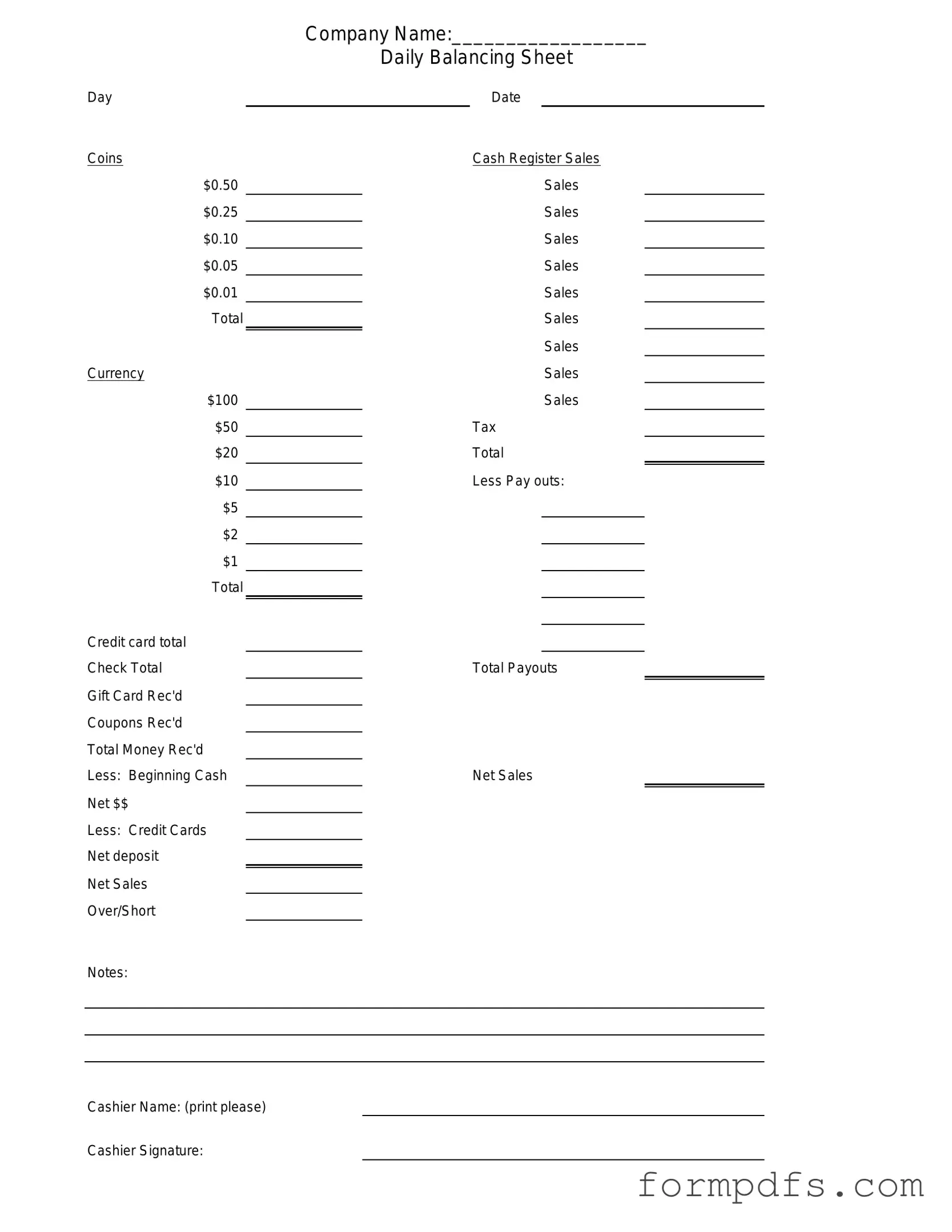What is a Cash Drawer Count Sheet?
A Cash Drawer Count Sheet is a document used by businesses to record the amount of cash in a cash drawer at the end of a shift or business day. This sheet helps ensure accountability and accuracy in cash handling, making it easier to identify discrepancies or losses.
Why is it important to use a Cash Drawer Count Sheet?
Using a Cash Drawer Count Sheet is crucial for maintaining accurate financial records. It helps track cash flow and ensures that the amount of cash in the drawer matches the sales recorded. This practice can prevent theft and errors, promoting better financial management.
How do I fill out a Cash Drawer Count Sheet?
To fill out a Cash Drawer Count Sheet, start by entering the date and the name of the person responsible for the cash drawer. Then, count the cash in the drawer, including bills and coins. Record each denomination separately, and calculate the total cash amount. Finally, sign and date the form to confirm the count.
What should I do if the cash counted does not match the expected amount?
If the cash counted does not match the expected amount, investigate the discrepancy. Review transaction records for the day, check for any errors in counting, and ensure that all sales have been recorded. Document any findings on the Cash Drawer Count Sheet and report the issue to a supervisor.
How often should I complete a Cash Drawer Count Sheet?
It is best practice to complete a Cash Drawer Count Sheet at the end of each shift or business day. This regularity helps maintain accurate records and allows for timely identification of any issues related to cash handling.
Can I use a digital version of the Cash Drawer Count Sheet?
Yes, many businesses choose to use digital versions of the Cash Drawer Count Sheet. Digital forms can streamline the counting process, reduce paperwork, and make it easier to store and access records. Ensure that the digital version captures all necessary information for accountability.
Who should have access to the Cash Drawer Count Sheet?
Access to the Cash Drawer Count Sheet should be limited to authorized personnel, such as managers and cashiers. This restriction helps maintain security and ensures that only trained individuals handle cash and financial records.
